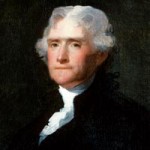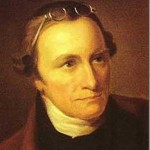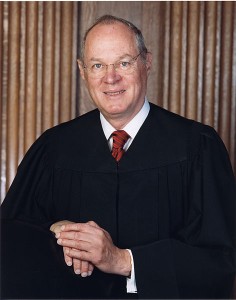 Freedom of Religion is the first of our natural rights acknowledged in the First Amendment and limits government’s power to establish an official religion or interfere with a citizen’s exercise of religion. This is a recognition of freedom of religion, not freedom from religion.
Freedom of Religion is the first of our natural rights acknowledged in the First Amendment and limits government’s power to establish an official religion or interfere with a citizen’s exercise of religion. This is a recognition of freedom of religion, not freedom from religion.
The first ten amendments to the US Constitution are referred to as the Bill of Rights. The First Amendment protects “freedom of expression” for Americans by restricting government authority to pass laws interfering with the freedoms of religion, speech, press and assembly. A fifth right, to petition the government for redress of grievances, is listed, but the citizens have allowed it to be taken from them. The first freedom protected in the First Amendment is religion.
It is fitting that protection of religious liberty from government interference is America’s “first freedom”. Many of the first North American colonists were motivated by a search for religious liberty.
Duty of 17th Century Civil Authorities to Save Souls
Seventeenth century European religious persecution arose from the belief, held by Protestants and Catholics, that a society must have religious uniformity since there was only a single true religion. Civil authorities had a duty to impose the single true religion by force if necessary in the interest of saving the souls of all citizens. Heretics might be executed and nonconformists were granted no mercy.
Religious persecution drove people from Europe to the British North American colonies. In the 17th Century, the English monarch headed the government established Church of England. Many subjects disagreed with royal religious policies, and many suffered physical punishment, imprisonment and loss of property as a result of holding firm to their religious convictions.
Pilgrims: Escaping Persecution to Enforce Conformity
The Pilgrims were among the most well-known of those fleeing English persecution. They fled first to Holland in 1608. The Pilgrims left Holland because there was too much religious liberty. Fears arose that their children would be corrupted by the religious tolerance of the Netherlands.
 In 1620 they set out for North America where their own beliefs of the “one true religion” could be practiced. Once established in their own colony, the Pilgrims enforced their own religious orthodoxy including banishing non-conformists from their community.
In 1620 they set out for North America where their own beliefs of the “one true religion” could be practiced. Once established in their own colony, the Pilgrims enforced their own religious orthodoxy including banishing non-conformists from their community.
Although the Pilgrims and other sects left England (and other European countries) to escape religious persecution, the belief of a governmental duty to impose religious purity traveled with the colonists. By 1702, all thirteen colonies provided some form of state support for religion. Evolution toward the First Amendment was slow. Escaping from intolerance did not automatically give rise to tolerance in the escapees.
The Fight over the Virginia Act for Establishing Religious Freedom
 Commitment to freedom and self-government arising from the tenets of “Natural Law” grew among the leaders of the New World, but government involvement in religion remained the rule rather than the exception. In 1779, three years after writing the Declaration of Independence, Thomas Jefferson, as Governor of Virginia, drafted the Virginia Act for Establishing Religious Freedom. It did not become law while Jefferson was governor.
Commitment to freedom and self-government arising from the tenets of “Natural Law” grew among the leaders of the New World, but government involvement in religion remained the rule rather than the exception. In 1779, three years after writing the Declaration of Independence, Thomas Jefferson, as Governor of Virginia, drafted the Virginia Act for Establishing Religious Freedom. It did not become law while Jefferson was governor.
In 1784, then Virginia Governor Patrick (“Give Me Liberty or Give Me Death”) Henry introduced a bill calling for state support for “teachers of the Christian religion.” Henry’s bill was in keeping with traditional government support of religion and contrary to Jefferson’s 1779 proposal. One hundred twenty four years after the Pilgrims arrived to establish their own religious liberty direct government involvement in religion remained part of the American landscape.
 Though Jefferson had proposed enshrining religious liberty into law, it was James Madison’s response to Patrick Henry’s proposal that provided the philosophical reasoning for the separation of church and state. Madison’s arguments laid the foundation for the religious clauses of the First Amendment.
Though Jefferson had proposed enshrining religious liberty into law, it was James Madison’s response to Patrick Henry’s proposal that provided the philosophical reasoning for the separation of church and state. Madison’s arguments laid the foundation for the religious clauses of the First Amendment.
Madison’s “Memorial and Remonstrance Against Religious Assessments”, was signed by over 2,000 Virginians, and makes the argument for separating government and the church:
“…the Religion then of every man must be left to the conviction and conscience of every…man to exercise it as these may dictate. This right is in its nature an inalienable right.”
 and the argument that government support of religion was in reality a threat to religion:
and the argument that government support of religion was in reality a threat to religion:
“…that the same authority which can establish Christianity, in exclusion of all other Religions, may establish with the same ease any particular sect of Christians, in exclusion of all other Sects?”
Madison’s arguments lead to the defeat of Henry’s proposed law for a tax to support Christian instruction. In 1786, the Virginia Act for Establishing Religious Freedom, modified somewhat from Jefferson’s 1779 draft, became law. The Pilgrims’ flight from religious intolerance had finally blossomed into government recognition of religious liberty.
The First Amendment’s Establishment and Free Exercise Clauses
In 1791, with the ratification of the First Amendment, protections from encroachment by the new federal government upon religious freedom became the law of the land with two clauses, known as the “Establishment Clause” and the “Free Exercise Clause”:
“Congress shall make no law respecting an establishment of religion, or prohibiting the free exercise thereof …“
The United States Supreme Court did not address the meaning of the First Amendment’s Religion Clauses until the 1878 case of Reynolds v. US, in which a member of the Mormon faith was criminally prosecuted for bigamy. The defendant maintained that bigamy was part of his religious belief system. The Supreme Court held that while Congress could not interfere with the belief in bigamy, it could regulate conduct that flowed from that belief.
The Reynolds Court reviewed the country’s history of religious liberty, and cited Jefferson’s now famous letter to the Danbury Baptist Association:
“Believing with you that religion is a matter which lies solely between man and his god; that he owes account to none other for his faith or his worship; that the legislative powers of the government reach actions only, and not opinions, — I contemplate with sovereign reverence that act of the whole American people which declared that their legislature should ‘make no law respecting an establishment of religion or prohibiting the free exercise thereof,’ thus building a wall of separation between church and State.”
Extension of the First Amendment to the States
The First Amendment, as written, applied only to actions by the federal government. The Fourteenth Amendment in 1868, changed application of the Bill of Rights, including the First Amendment, from limitations on the federal government alone to restrictions on state governments as well. The 14th Amendment prohibited States directly from denying due process of law, the privileges and immunities of US citizens or equal protection of the law.
Over time these 14th Amendment provisions have been interpreted to apply certain aspects of the Bill of Rights directly to actions by state governments through the doctrine of selective incorporation. In 1940 the Supreme Court applied the Free Exercise Clause to the states and in 1947 it applied the Establishment Clause. There had been limited court action regarding the religious clauses prior to 1947, but with application of the First Amendment to the states, court decisions have multiplied.
How the Clauses Have Worked in the Modern Era
 Since 1947, the Supreme Court has gotten more involved in religion cases. So much so, that Justice Kennedy likened the Court’s action in the religious field to conducting itself like a “national theology board.” Here are some of the most important religion cases since 1947.
Since 1947, the Supreme Court has gotten more involved in religion cases. So much so, that Justice Kennedy likened the Court’s action in the religious field to conducting itself like a “national theology board.” Here are some of the most important religion cases since 1947.
Everson v. Board of Education (1947)
New Jersey law which included students of Catholic schools in reimbursements to parents who sent their children to school on buses operated by the public transportation system does not violate the Establishment Clause of the First Amendment, but Supreme Court finds that Establishment clause applies to the states.
McCollum v. Board of Education Dist. 71 (1948)
Burstyn v. Wilson (1952)
Torcaso v. Watkins (1961)
Engel v. Vitale(1962)
Abington School District v. Schempp (1963)
Epperson v. Arkansas (1968)
Lemon v. Kurtzman (1971)
Stone v. Graham (1980)
Wallace v. Jaffree (1985)
Edwards v. Aquillard (1987)
Lyng v. Northwest Cemetery Prot. Ass’n (1988)
Allegheny County v. ACLU (1989)
Employment Div. of Oregon v, Smith (1990)
Lee v. Weisman (1992)
Church of Lukumi Babalu Ave., Inc. v. Hialeah (1993)
City of Boerne v. Flores (1997)
Hosanna-Tabor Evangelical Lutheran Church & Sch. v. EEOC (2012)
The law of religious liberty as developed by the Supreme Court since 1947 does not lend itself to simple summation. When it comes to the “free exercise” of sincerely held religious beliefs, the government must make reasonable accommodations or exceptions to otherwise generally applicable laws to allow such exercise. When it comes to the “establishment” of religion, generally, the government cannot take action to favor one religion over another, or religion over the lack of religion.
Congress has had its input into government’s relation with religion. In 1993, in response to the lessening of protections for religious practices by the Supreme Court, the Religious Freedom Restoration Act was passed, imposing certain rules on courts considering religious issues. Many cases in federal courts today involve not only the First Amendment but the RFRA.
Continued Battles Over Religious Liberty
The tension between government and religion is ongoing. In 2013 there were more than 43 lawsuits around the United States challenging the constitutional authority of the government to impose upon employers requirements to provide employee insurance coverage for contraception services contrary to the sincerely held religious and moral beliefs of the employers. The suits contended government requirements that employers provide such coverage interferes with the free exercise of their religion. In 2014, the Supreme Court, in Burwell v. Hobby Lobby, agreed.
There are times when the First Amendment limits on government interference with religious liberty and free speech come together. In 2018, the Supreme Court, in Masterpiece Cakeshop v. Colorado Civil Rights Commission, again recognized First Amendment limits on the government to compel an individual to participate in an act that violates their beliefs.
Ongoing Evolution from the Pilgrims to a Religiously Tolerant Society
It’s now over 400 years since the Pilgrims first left England to escape the persecution for their religious beliefs. The American core value of religious liberty did not spring fully formed from the Pilgrim experience. Sorting out the proper relationship between government and religion remains ongoing, but the values of freedom of thought and expression have become ingrained.






[…] freedom and the First Amendment’s Free Exercise of Religion Clause have come under attack as a result of Obamacare. People of faith have united in lawsuits […]